On February 23, the 2025 Global Developer Pioneer Conference forum titled “Embodied Intelligence: Unlocking the Key to the Future World” was held at the Caohejing Conference Center, gathering nearly two hundred scientists and industry elites from both domestic and international backgrounds to discuss the cutting-edge trends in the global embodied intelligence industry, promoting the industrialization and ecological development of embodied intelligence technology, and contributing to the construction of an open, collaborative, and innovative intelligent future.
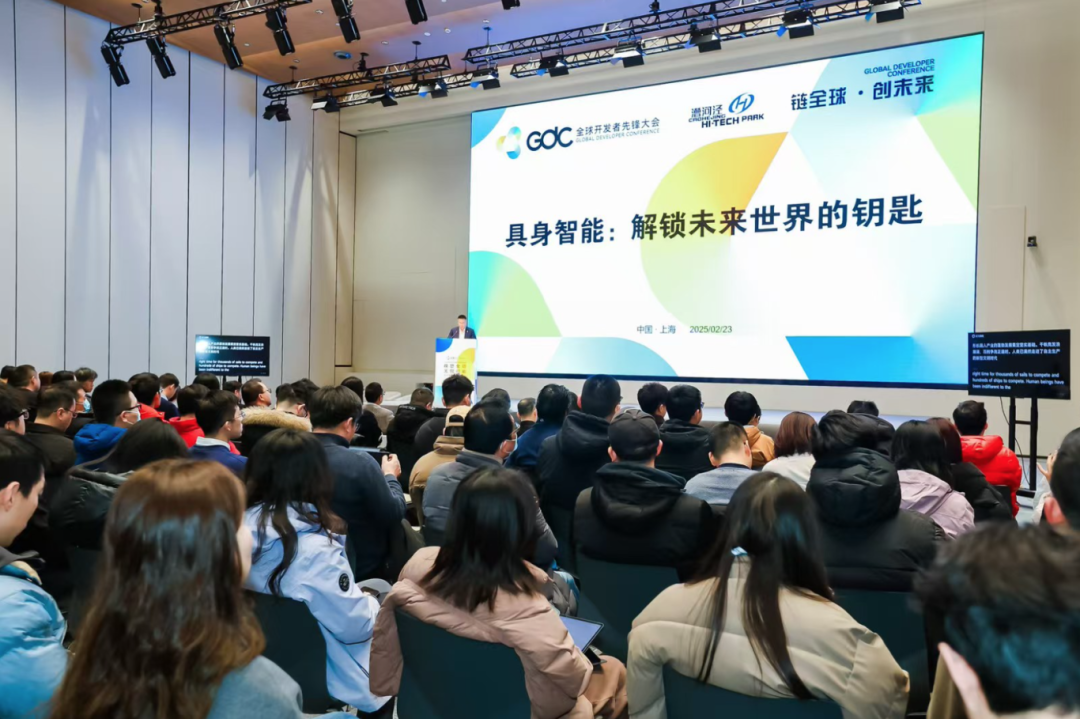
Can We Expect Elderly Care Robots?
A pair of robotic hands can not only pick up peeled eggs but also gently grasp tofu without any deformation, and can lift a thin sheet of paper without any obstacles. Even more astonishing is that these dexterous hands can thread soft sewing thread through a needle with smooth movements… During the keynote speech, Professor Sun Fuchun from Tsinghua University’s Computer Science Department showcased a video of his team’s developed robotic dexterous hand, which received rounds of applause from the audience for its exquisite movements.
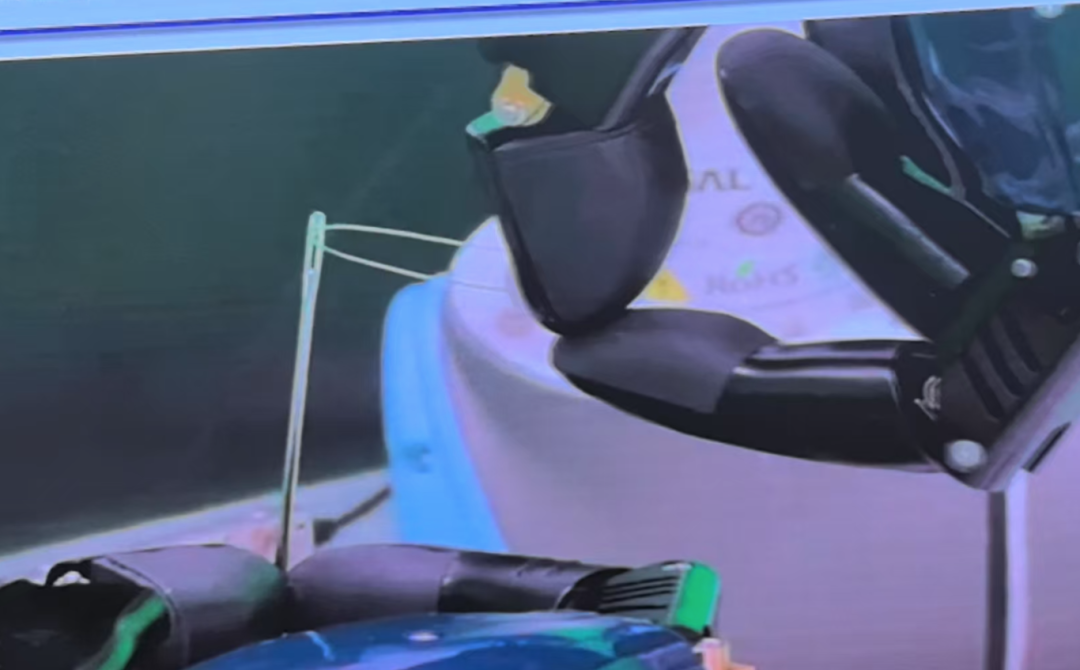
“With the continuous upgrading and iteration of core components, humanoid robots may usher in a market scale of trillions of yuan.” Jiang Lei, chief scientist of the National Local Joint Innovation Center for Humanoid Robots, stated in his keynote speech that by 2026, humanoid robots will reach a production or sales threshold of 100,000 units. This means that humanoid robots will no longer be specialized products for specific fields or applications, but can be widely used as general-purpose products across different fields and scenarios.
So, can we start to expect humanoid robots to serve the elderly? The dancing robot Yushu, which shone during the Spring Festival Gala, and Figure’s self-developed end-to-end embodied intelligence model Helix, officially released on the evening of February 20, have made the public’s expectations for “elderly care robots” and “household robots” more urgent than ever.
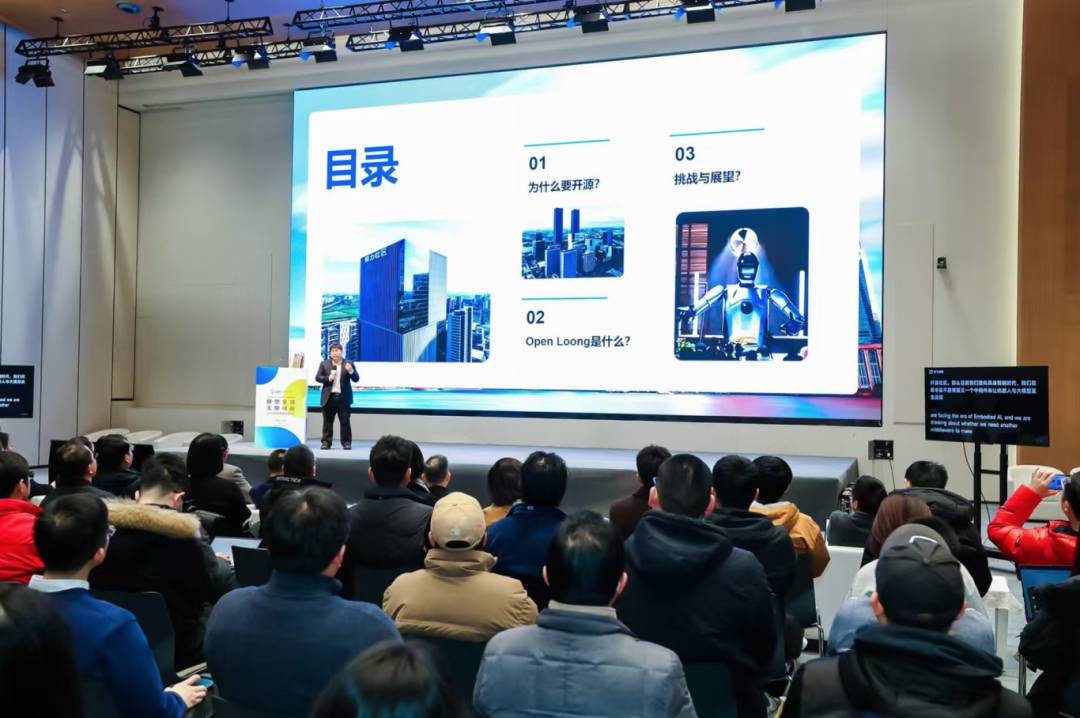
In this regard, Jiang Lei believes that elderly care is indeed a very important field for the humanoid robot industry. However, humanoid robots urgently need to tackle eight critical technologies related to elderly care scenarios, namely safety, emotion, interaction, ethics, perception, energy, standards, and cost. “We need to ensure the stability of robots in complex environments, ensure the safety of the elderly, and currently, robots lack human-like touch and force perception, making it difficult to perform delicate care tasks. Insufficient battery life and high R&D costs also limit their large-scale commercial application. These are all challenges that need to be overcome, requiring cross-departmental and cross-field collaborative development.”
Jiang Lei believes that while many high-tech innovations surrounding humanoid robots are emerging, most are focused on training skills like washing dishes and folding clothes. A humanoid robot that truly meets human expectations must have four important characteristics: it must be fast, precise, well-trained, and possess good generalization capabilities. Currently, Yushu Technology’s small robot is “fast,” OpenAI’s 1x is “precise,” Tesla’s Optimus is “well-trained,” and Physical Intelligence’s robot brain has good generalization capabilities, but no group in the world has yet managed to combine these four companies into a single product. “The humanoid robot of the future that can truly be used must integrate these four performances; only in this way can the technology of robots achieve a closed loop and create scenarios for future applications.”
Here lies the future of humanoid robots
The presentations inside the venue were impressive, and the robots at the exhibition booths outside were also remarkable. In front of the Qingxinyi exhibition booth, a nearly 1.5-meter tall robot attracted everyone’s attention; it can walk with straight knees like a human, move smoothly, and even display a variety of “expressions”. The open-source robot “Qinglong” was also present, with staff explaining that it can perform Tai Chi movements with a joint control precision of 0.01 millimeters, and a bipedal robot can complete 15 consecutive precise passes on a football field, while its mechanical fingers can slice potatoes into translucent strands of 0.1 millimeters in an oily smoke environment…
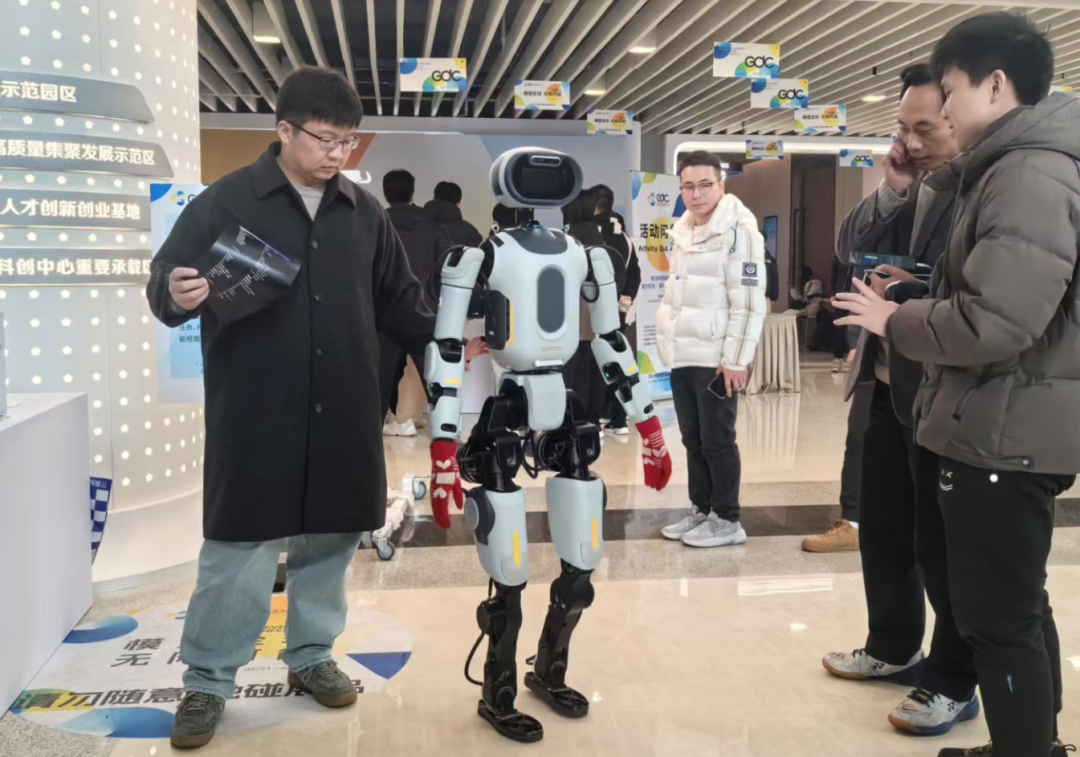
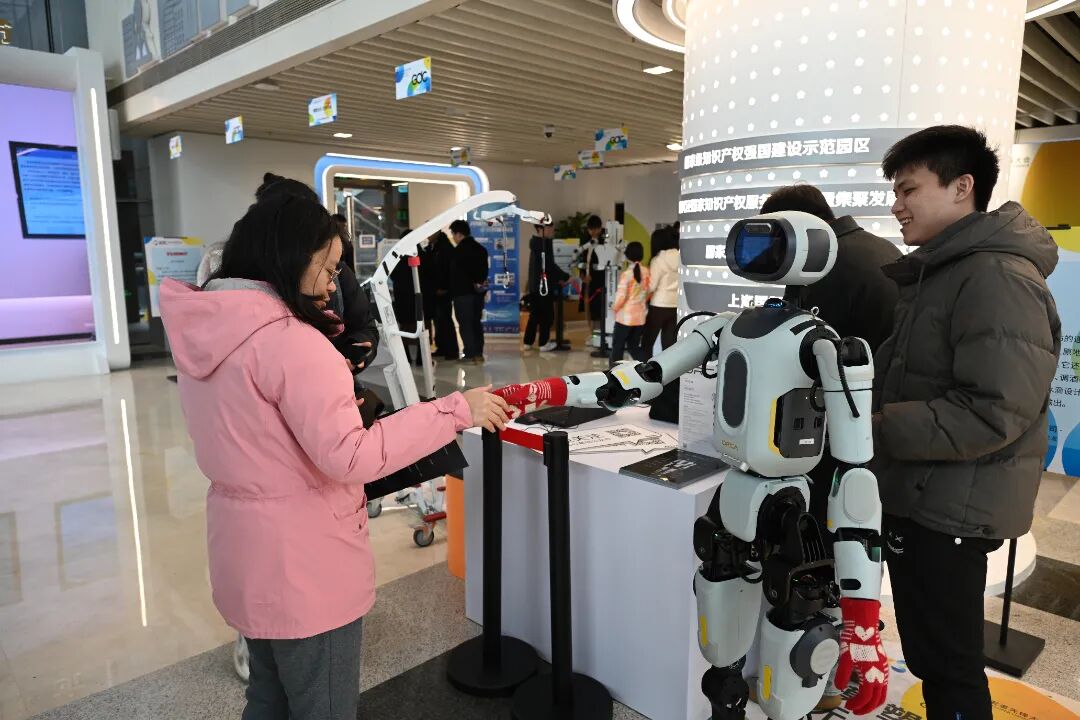
“These robots all come from enterprises incubated by the Shanghai Humanoid Robot Innovation Incubator and strategic partners of the incubator,” the exhibition staff explained.
According to reports, the Shanghai Humanoid Robot Innovation Incubator is located in the Caohejing Development Zone and was established just last year. In a short span of one year, it has been recognized as a high-quality incubator in Shanghai, giving rise to a number of quality enterprises such as Qingxinyi, Aiguan Vision, and Partner Robotics. This forum on “Embodied Intelligence: Unlocking the Key to the Future World” is hosted by the Global Developer Pioneer Conference Organizing Committee Office and co-organized by the Shanghai Humanoid Robot Innovation Incubator, the National Local Joint Innovation Center for Humanoid Robots, and the Shanghai Caohejing New Technology Development Zone Development Company.
The Caohejing Development Zone is one of the important carriers of Shanghai’s innovation center, with an artificial intelligence industry scale exceeding 100 billion yuan, focusing on cultivating several related emerging industries. Among them, embodied intelligence, especially humanoid robots, is a strategically emerging industry that the development zone is prioritizing. Currently, the development zone has built a complete industrial chain ecosystem for humanoid robots: upstream, relying on leading companies like SenseTime, Minimax, and Fourth Paradigm to provide computing power, algorithms, and large model support for robots; midstream, closely linking with ecological partners like the 21st Institute of China Electronics Technology Group to introduce a batch of humanoid robot manufacturers like Xingdong Jiyuan, driving rapid development of the industry upstream and downstream; downstream, integrating resources from the automotive industry and medical sector to provide a wide range of application scenarios for humanoid robot companies.
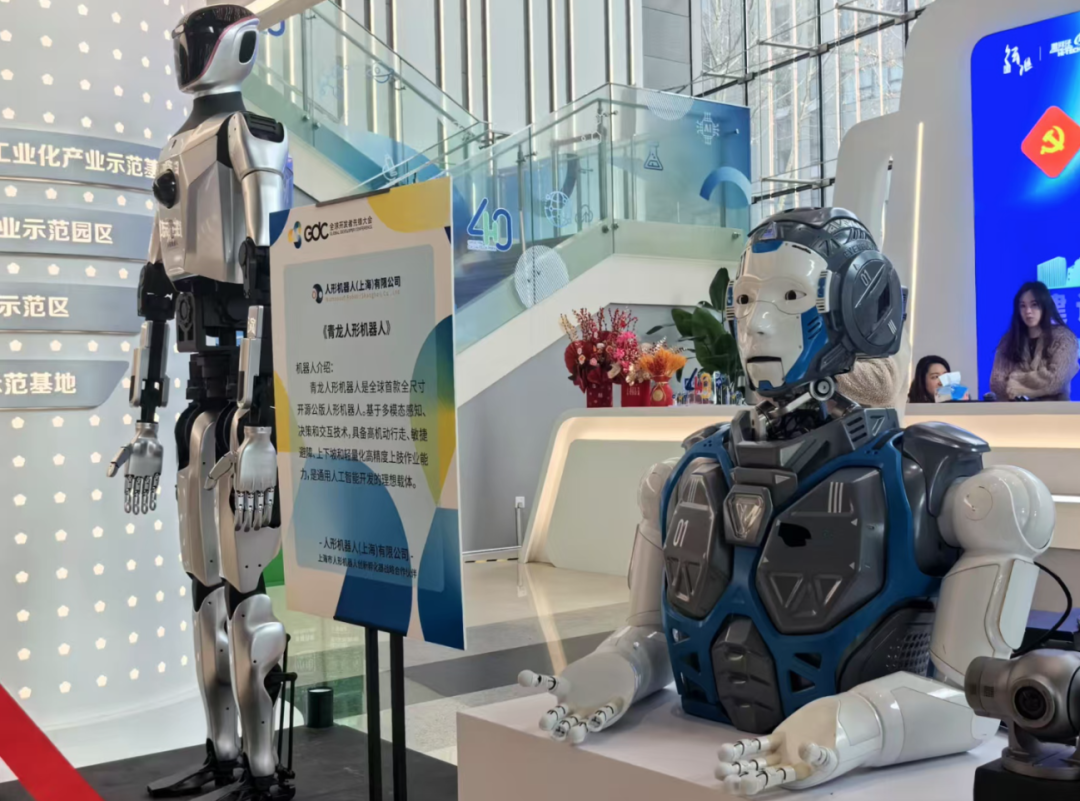
“The Global Developer Pioneer Conference is a great opportunity, and we hope that this forum can promote in-depth exchanges and cooperation among industry, academia, and research, jointly advancing the innovative development of embodied intelligence,” said Wei Zuye, Deputy Secretary of the Party Committee and General Manager of Shanghai Caohejing New Technology Development Zone Operation Management Co., Ltd.
You May Also Like:
AI in Xuhui Unlocks New Momentum for the Bioeconomy
The World’s Largest AI Incubator – Mosu Space Reopens!
This “Little Brother Station” flagship store is warmly reopened!
Thousands of housing resources recommended to enterprises! Xuhui’s Spring Supply and Demand Promotion Conference for Guaranteed Rental Housing Innovates Service Models
A New Cultural Landmark! The Shanghai West Bank Grand Theatre is About to Unveil!
Reporter: Wang Yongjuan
Editor: Qiu Caihong
Proofreader: Geng Jieyu
Please indicate the source from the official account of Shanghai Xuhui when reprinting.



